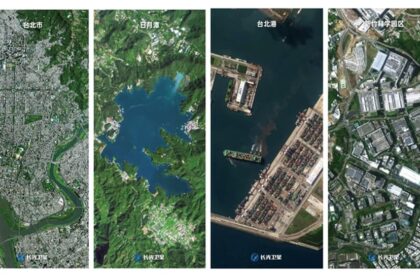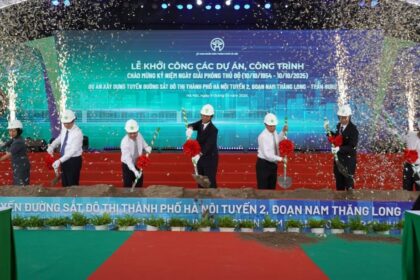The Mystique of Wuyi Rock Tea: Where Nature and Craftsmanship Meet
In the mist-shrouded valleys of Mount Wuyi, southeastern China, a centuries-old tradition continues to thrive. Here, in Fujian province’s UNESCO-listed landscape, Wuyi rock tea—also known as Yancha—emerges as one of the world’s most revered oolong teas. The region’s unique terroir, mineral-rich soils, and intricate craftsmanship have made Wuyi rock tea a symbol of Chinese tea culture and a sought-after delicacy among connoisseurs worldwide.
What Makes Wuyi Rock Tea Unique?
Wuyi rock tea owes its distinctive character to a combination of natural and human factors. The Wuyi Mountains are famed for their steep cliffs, narrow valleys, and manganese-rich rocky soils. These geological features, shaped by tectonic activity, provide excellent drainage and infuse the tea leaves with a signature mineral note, often described as “rock rhyme” or yan yun. The region’s misty microclimate further enhances the complexity of the tea’s flavor and aroma.
Historical records indicate that over 200 varieties of rock tea have been cultivated in the Wuyishan area. Among them, Da Hong Pao stands out as the most legendary, often fetching astronomical prices at auction and celebrated as a national treasure.
The Art of Traditional Tea Craftsmanship
The journey from leaf to cup is a meticulous process, rooted in techniques refined since the 16th century. At dawn, skilled pickers select only the tender buds and three to four mature leaves, ensuring optimal flavor. The freshly plucked leaves are quickly transported to processing sites, where master tea makers take over.
Traditional processing involves several key steps: withering, rolling, oxidation, and firing. The leaves are rhythmically shaken in bamboo trays—a method that creates the tea’s signature “green leaf with red edge.” This labor-intensive process requires years of experience and a deep understanding of the leaves’ subtle changes. The final roasting, often done over charcoal, imparts a roasted, mineral-rich taste that defines authentic Wuyi rock oolong.
“The craftsmanship of Wuyi rock tea is the most complicated among all tea,” says You Yuqiong, a recognized inheritor of Wuyi rock tea craftsmanship. “Traditional techniques are the soul.”
You, who has worked in the tea industry for four decades, exemplifies the dedication to preserving these ancient methods while embracing innovation.
Blending Tradition with Technology
While tradition remains at the heart of Wuyi rock tea, modern technology is increasingly playing a role. You Yuqiong was among the first in China to adopt tea-picking machines, streamlining the harvest without sacrificing quality. Her son, Fang Zhou, a University of Warwick graduate, has introduced artificial intelligence models to predict optimal roasting temperatures, marrying ancient wisdom with cutting-edge science.
“This is the development of society, and modern technology is something that must be used in the process of industry progress. Technology empowers our traditional industry,” You explains.
This fusion of old and new ensures that Wuyi rock tea remains relevant and competitive in a rapidly changing world, while safeguarding the integrity of its heritage.
Economic and Cultural Impact
The significance of Wuyi rock tea extends far beyond the teacup. Fujian province has built a thriving industry around its tea culture, integrating tourism, hospitality, and retail. Visitors to Mount Wuyi can experience tea-infused banquets, stay in tea-themed accommodations, walk scenic tea trails, and witness live tea performances. In 2023, the province’s tea plantation area reached 252,000 hectares, producing 560,000 metric tons of raw tea and generating an industrial value exceeding 160 billion yuan (about $22.28 billion). Mount Wuyi alone welcomed over 33 million tourists, contributing 35.2 billion yuan in tourism revenue.
This deep integration of tea culture and tourism not only boosts the local economy but also helps preserve and promote the intangible cultural heritage of Wuyi rock tea. In 2006, the traditional craftsmanship was listed as a national intangible cultural heritage, and in 2022, it was inscribed on UNESCO’s Representative List of the Intangible Cultural Heritage of Humanity.
Health Benefits and Global Appeal
Wuyi rock oolong is celebrated not just for its taste but also for its health benefits. Rich in antioxidants, it is believed to support metabolism and overall wellness. Its complex flavors—ranging from floral and fruity to roasted and mineral—make it a favorite among tea enthusiasts seeking an authentic and sophisticated experience.
As global interest in specialty teas grows, Wuyi rock tea continues to captivate new audiences, reinforcing its status as a cultural ambassador for China’s tea heritage.
In Summary
- Wuyi rock tea is a unique oolong tea grown exclusively in the mineral-rich, misty mountains of Mount Wuyi, Fujian, China.
- Its distinct flavor and aroma result from a combination of terroir, traditional craftsmanship, and meticulous processing techniques.
- Master artisans like You Yuqiong are preserving ancient methods while embracing technological innovation to ensure quality and sustainability.
- The tea industry in Fujian is a major economic driver, deeply integrated with tourism and cultural promotion.
- Wuyi rock tea is recognized as a national and UNESCO intangible cultural heritage, celebrated for both its taste and health benefits.












